Choosing an engagement ring when you’re partial to a particular colour is easy. But what do you do when your jewellery box is a melting pot of metals and the thought of committing to one colour for the rest of your life is enough pressure to produce a diamond?
Refer to SH Jewellery’s engagement ring metal comparison below, which examines the most popular gold and platinum metals to help you arrive at a decision that your lifestyle, budget and skin type can all agree on.
Image via SH Jewellery
Yellow Gold Engagement Rings
The more traditional choice overlooked for white gold in recent times, currently plotting a spectacular comeback.
Composition & Colour
Pure gold is too soft to withstand the wear and tear of everyday use and is easily scratched, so yellow gold engagement rings contain a combination of pure gold and other metals like copper, brass, zinc and silver, which are added to make them stronger.
The universal measurement for gold is a karat (K), which can be divided into 24 parts. Pure gold is 24K, meaning 24 of the 24 parts are gold. 22K gold engagement rings do exist, however 18K (75% gold), 14K (58% gold) and 10K (around 42% gold) are more common due to their stronger, more scratch resistant qualities.
The colour of yellow gold engagement rings differs depending on the karat (i.e. the percentage of other metals present). 18K produces a richer, more vibrant yellow, while lower karats offer a paler shade. The warm patina of yellow gold is due to the red influence of copper and the green caused by silver.
Durability
Yellow gold is not as durable as white gold, so when comparing rings of the same karat, yellow gold will wear and tear faster than white gold. If you’re particularly active, or you work with machines and equipment, white gold may be a more suitable option.
Skin Type
Yellow gold is the most hypoallergenic of gold metals, meaning it’s least likely to cause allergic reactions.
Skin Tone
Darker and olive-toned skin make for a beautifully contrasted backdrop to a yellow gold engagement ring.
Price
Yellow gold engagement rings are around the same price as their white and rose gold counterparts, as the pure gold component in all of these rings is the same: an 18K yellow gold ring has the same pure gold component as an 18K white or rose gold ring.
Yellow gold engagement rings can, however, be less expensive than white gold engagement rings, as yellow gold does not require the additional labour and production costs associated with rhodium plating – more on this below.
Source: SH Jewellery
White Gold Engagement Rings
A contemporary favourite due to their durability, brightness and ability to enhance a diamond’s sparkle.
Composition & Colour
Like yellow gold, white gold contains pure gold alloyed with other metals, such as silver, manganese, nickel, zinc and palladium. The purity of white gold engagement rings and wedding bands is also measured in karats, most commonly purchased as 14K (58% gold) or 18K (75% gold).
White gold engagement rings are usually plated with rhodium (a platinum group metal applied to reduce scratching and tarnishing), which produces a chrome-like reflective finish. This makes white gold a popular choice for engagement rings due to its ability to intensify a diamonds’ sparkle.
Durability
Despite being harder and more scratch resistant than yellow gold, the rhodium plating applied to white gold engagement rings will wear over time and requires re-application every one to three years, depending on use.
Re-plating is a quick and easy process and the fully restored shine dramatically improves the ring’s aesthetic. At SH Jewellery, re-rhodium plating is performed in-store by Master Jewellers usually as a next day service for *$60 for a basic ring, subject to change.
The strength of white gold also makes it ideal for engagement rings, as white gold prongs are quite stiff, requiring less frequent tightening than yellow or rose gold prongs.
Skin Type
Some white gold alloys can cause allergic reactions to certain skin types due to their nickel content, so people with sensitive skin are advised to select rings with a higher palladium content. The white gold rings available at SH Jewellery are of 18K purity and contain palladium, making them less likely to cause irritation to sensitive skin.
Skin Tone
White gold works particularly well with lighter skin tones, though its ability to reflect a diamond’s sparkle makes for an impressive engagement ring ensemble on just about any skin colour.
Price
Karat for karat, the price of white gold is slightly more than yellow gold, due to the materials used in alloying and there are additional costs associated with rhodium plating to make the metal stronger, brighter and more scratch-resistant.
Source: SH Jewellery
Rose Gold Engagement Rings
The romantic’s choice available in varying shades of pink, rose and red that work particularly well with vintage-style engagement rings.
Composition & Colour
Rose gold is predominantly pure gold and copper, often blended with other metals; the exact percentages of which differ from jeweller to jeweller and are considered a tightly held recipe for the perfect shade.
The greater the copper content, the richer the pink, so choosing a 14K (58% gold) rose gold engagement ring will produce a stronger pink than an 18K gold ring (75% gold), as the 14K rose gold ring contains less pure gold and more copper. A silver component can also be added to reduce the redness, achieving a softer blush of pink.
Durability
The copper content in rose gold makes it stronger and more durable than yellow or white gold. No re-application is required with rose gold and it maintains its shine for a lifetime without tarnishing. The copper component can however darken with age and appear slightly redder over time, producing a naturally aged vintage effect.
Skin Type
The copper in rose gold engagement rings is not considered a hypoallergenic metal, making it more likely to cause allergic reactions than yellow or white gold.
Skin Tone
Rose gold is a versatile colour, however it is particularly popular among women with pale skin.
Price
As with yellow and white gold, the primary ingredient in rose gold is pure gold, so price depends on karat; the percentage of pure gold in a 14K rose gold ring is the same as a 14K white or yellow gold ring, so the value is relatively equal.
Source: SH Jewellery
Platinum Engagement Rings
The rarest of all engagement ring metals symbolising solidarity and prestige.
Composition & Colour
Platinum rings must consist of at least 95% platinum to be considered genuine. They have a naturally metallic appearance, which like white gold, brilliantly enhances a diamond’s sparkle.
A platinum ring will maintain its colour over time and will not tarnish like white gold, which requires rhodium plating every one to three years to maintain its brilliance. Platinum is about 20% denser than white gold and requires more of it to make the same ring setting. This produces a heavier, more substantial feeling when worn, even with a finer band.
Durability
Platinum is a popular choice for engagement rings due to its strength and non-corrosive values. Although it’s softer and more easily scratched than 14K gold, platinum prongs are almost impossible to break due to their ductile qualities.
Unlike gold, which loses tiny slivers of metal when scratched, platinum gets pushed around rather than completely removed. This produces a patina finish, giving the ring an antique appearance. While this can be corrected with polishing, some people quite admire this worn effect.
Skin Type
Platinum’s purity makes it naturally hypoallergenic, so it’s ideal for people with sensitive skin types.
Skin Tone
As with white gold, platinum is typically well-suited to paler skin tones, though compatibility is subjective – only you can decide what works best with your skin tone and nobody will spend more time admiring the ring than you.
Price
While the market availability of platinum fluctuates, there are various other factors jewellers take into account when pricing their platinum engagement rings. Not only is it more dense, requiring more material weight to produce the same ring from white or yellow gold, but it is also purer; most platinum is 95% pure, whereas 18K white gold is 75% pure gold.
Platinum is also more difficult to work with, requiring greater skill and therefore increased labour costs. Unlike white gold, platinum cannot be reused and remelted, so scrap metal or filings must be sent to a refiner, which can also increase the cost. For the most up to date pricing for platinum vs. white gold vs. rose gold browse the exclusive range available at www.shjewellery.com.au.
Source: SH Jewellery
Choosing an Engagement Ring Metal: Prioritising Criteria
At the end of the day, no one metal reigns supreme – celebrity engagement ring trends will pass, all metals require maintenance, and each type boasts its own unique qualities, compositions and colour variations.
Trust your instincts, rank your criteria in order of importance to you and consider how your metal will ultimately complement the most important feature of your ring – the diamond/s. Once you’ve decided on a metal type, the next step is choosing a jeweller who offers extended 10-year warranties, complimentary lifetime aftercare and free engagement ring cleaning to ensure your ring maintains its brilliance long after it leaves the shop, no matter which metal you settle on.
About the author SH Jewellery: As an independent jeweller, the SH Jewellery collection is exclusive to our brand, allowing us full creative freedom over the look and feel of our engagement rings and wedding bands. All our rings are designed in-house at our Springvale showroom, combining decades of design history with modern influences from across the globe.


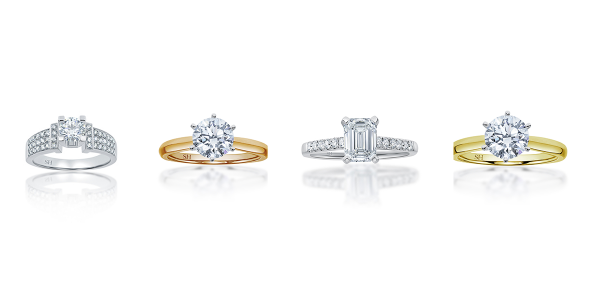
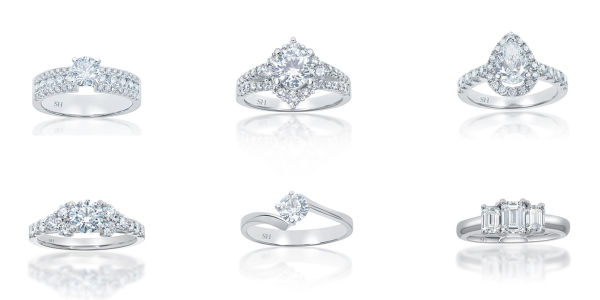
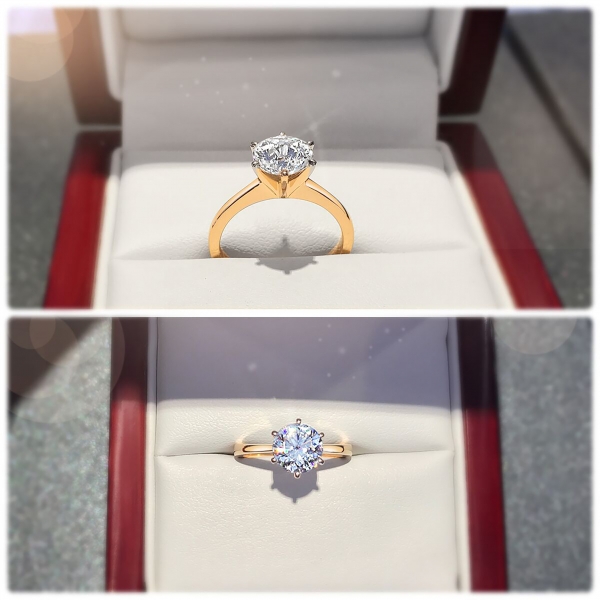
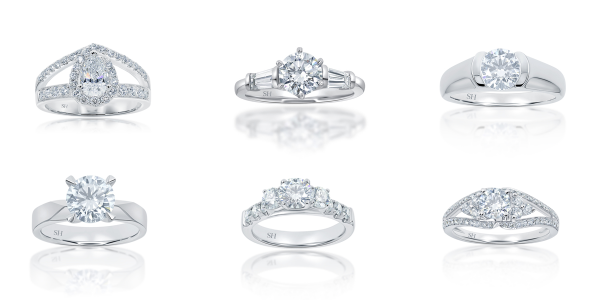
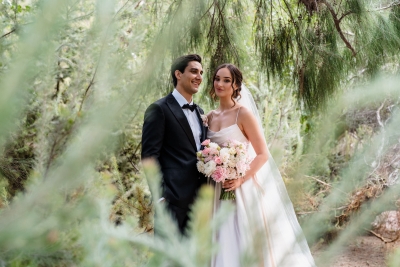
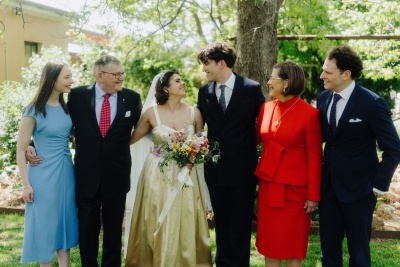

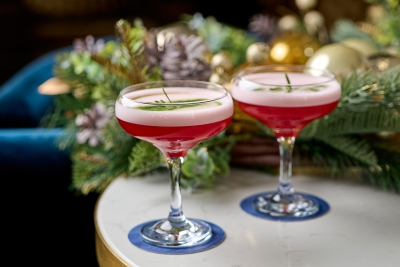




Join the conversation